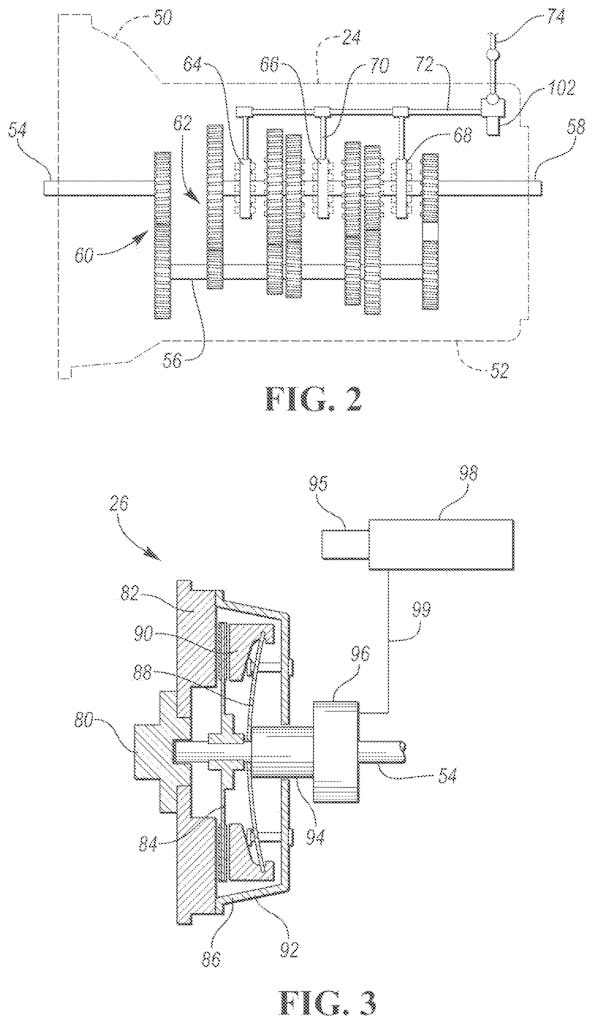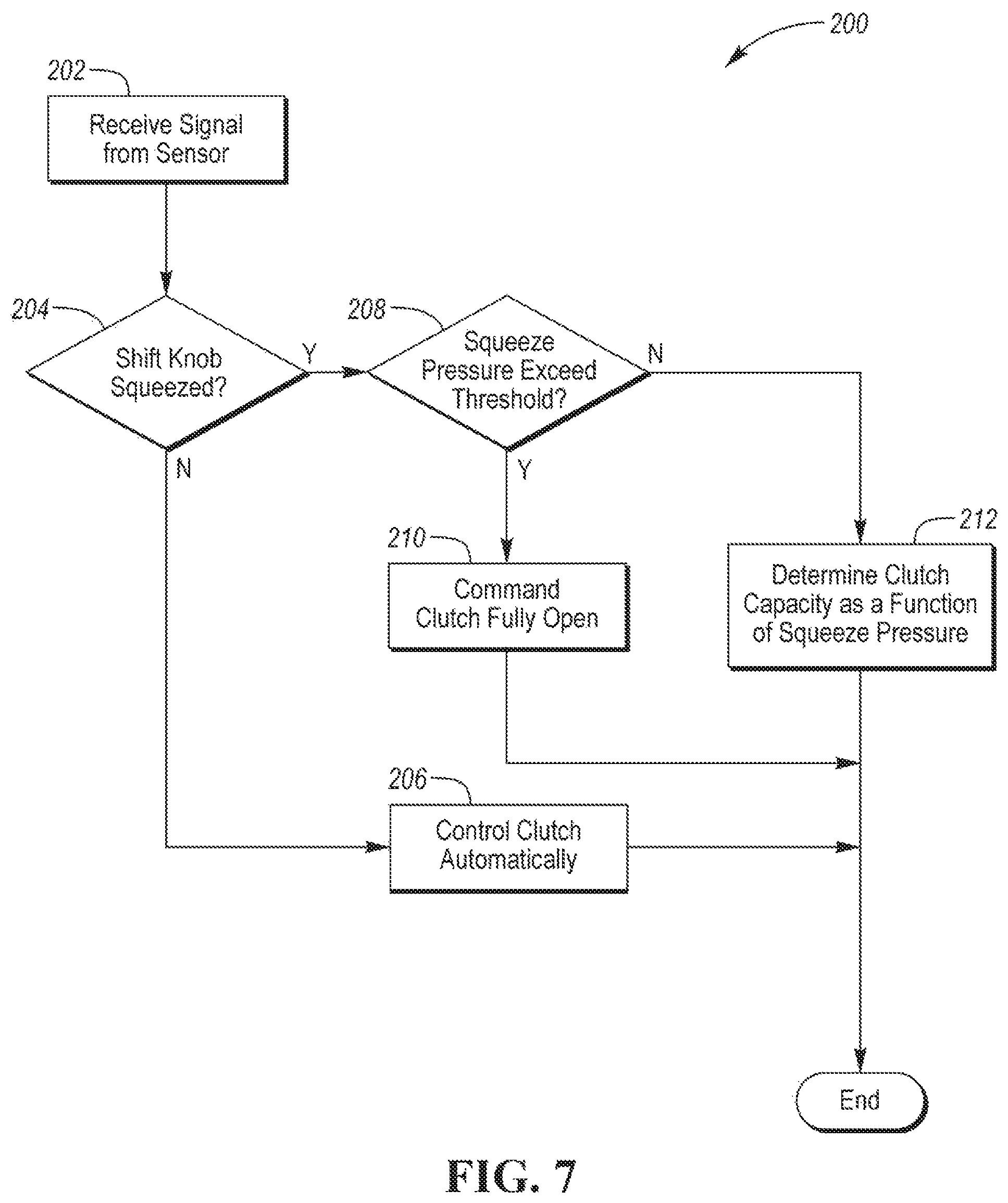What you need to know about Ford’s “automated manual” transmission
The enthusiast community has been decrying the death of the manual transmission for what feels like decades, and for good reason. The numbers of manuals offered in new cars has shrunk year after year to the point that by our best estimations, just 1 percent of new cars are sold with a three-pedal setup. A recent patent filing from Ford stands to keep the manual on the road for enthusiasts—but there’s a catch.
This patent was originally filed in 2018 but only recently did the details get fully uncovered. You can read the full summary and background if you just love a warm cup of coffee and endless paragraphs of legalese. In case that isn’t your thing, and we’re guessing it isn’t, we dug out the highlights of what this is, what it could be, and why this is a good thing. Let’s get to it.
What it is

The core of Ford’s patent is a manual transmission with a clutch pedal that can be automated—theoretically, a best-of-both-worlds scenario. Instead of a traditional hydraulic clutch that only disengages when the driver presses that third pedal, this patent proposes an electric motor to actuate a hydraulic cylinder which would engage and disengage the clutch. This would mean the clutch pedal is merely an electric switch—and that switch, pedal-style or otherwise, could control the clutch the same way. The patent proposes using a pressure sensor on the shifter itself that would disengage the clutch when the driver pushes or pulls on the shifter to change gears. Alternatively, the driver can override the controller and use a pedal to actuate the clutch.

Why it could work
The core of this design is the same system that is in millions of manual-transmission cars today. Using an electric motor to actuate the system allows this “manual” to mesh nicely with the advanced cruise-control systems on the market today, since the car’s computer could take command of clutch duties when needed but leave shifting to the driver by default. The ability to remove the leg-cramping clutch-in, clutch-out from stop-and-go traffic might bring some manual lovers back into the fold, too. (No, you aren’t a wimp if you bought an automatic-equipped car as your daily commuter. We’ve all been there.) An electronically actuated clutch would also mitigate the three-pedal learning challenge and the initial fear of damaging a clutch.

This is not an attempt to make a dual-clutch transmission feel like a traditional manual, and we applaud Ford for it. Shift speed with this design would likely be no better or worse than that of a traditional manual, which probably keeps a system like this out of realm of halo cars or pure performance machines. We’ll readily acknowledge that DCTs execute far faster shifters and are often better for track use. The language of Ford’s 2018 patent is clearly targeted at consumer automobile, though, rather than performance.
Now for a pile, not a pinch, of salt
I for one thought this type of system was something that never made good mechanical sense or, if it did, would be clunky to use. However, the automotive landscape has changed dramatically since the first murmurs of this design. Could this pseudo-manual keep user-controlled transmissions on the road? Short answer, yes.
Patents are a double-edged sword, though, and Ford now has this idea locked down. Should the Blue Oval decide the idea is not financially feasible, and choose not to license or sell the patent, the idea is untouchable until the patent expiration date in 2039. This wouldn’t be the first time an OEM patents something and then ends up just sitting on the idea.
Another detail worth noting is that a system like this adds multiple failure points to the clutch system. This complexity can cause nightmares at the failure of a simple switch, as anyone who has experienced a broken clutch cable or failed slave cylinder can tell you. Increased production cost and complication, not to mention niche appeal, will likely make this a pricey option, should it ever exist.
Others are connecting this patent to the next-generation Mustang, but we’ll shoot straight here: That is all speculation at this point, and saying much beyond “this is a system that could exist” is just rumor. Fun dreaming, but dreaming all the same. We know many of you are hoping that traditional three-pedal cars would make a triumphant return: Is this a compromise you would tolerate, or even embrace?




About Techno-Garbage Cars:
I consider this to be like all of the “good as a manual transmission claims”, as utter BS…
A lot of consumers have been stung by auto salesmen saying that a: Constantly Variable Transmission, Dual Clutch Transmission, Automated Manual, Nine Speed Planetary Gear Automatic, etc. is as “good as a manual transmission”. Only to pay at least five grand as their learning experience.
Sure there are some people who buy whatever BS the automakers are pushing.
For example here is the first line of the owners manual for a 2001 Lexus RX300:
“Welcome to the growing group of value–conscious people who drive Lexus vehicles. We are proud of the advanced engineering and quality construction of each vehicle we build.”
The RX300 costs a grand in labor to change a bad power steering hose and about five hundred in labor just to change the spark plugs. That is if you can find a garage that will even service the X300. As the VSC label on the exterior must stand for “Very Sh!tty Car”. While it isn’t an impossible to service steaming pile like the Toyota LE Van, it is a car that sucks to own long term…
Sure there are a few people who will buy Techno-Garbage and ask for more. As a neighbor still believes that “Honda makes the very best cars in the world” even after paying over five grand to fix a blown CVT at 47,000 miles. Ironically she told me that my 2007 Ford Mustang GT “won’t even last 47,000 miles”…
But consumers are finally wising up about Techno-Garbage Cars, the main reason that used cars with a real manual transmission or those with a five or less speed planetary automatic transmission are rapidly increasing in value…
I have always owned a car with a manual transmission, and have been driving since 1984. I have never blown a clutch and the only defective manual transmissions I have had trouble with were Honda’s crappy five speed in two early Civics and the defective five speed in the early Toyota Tercel that had a design fault with reverse…
Note: I replaced the manual on a 1971 VW Van with over 400 k miles on it for a weak four gear syncro and on a four speed manual in my 1978 E-150 at over 520,000 miles for a noisy second gear syncro, when I rebuilt the engines in the VW & E-150…